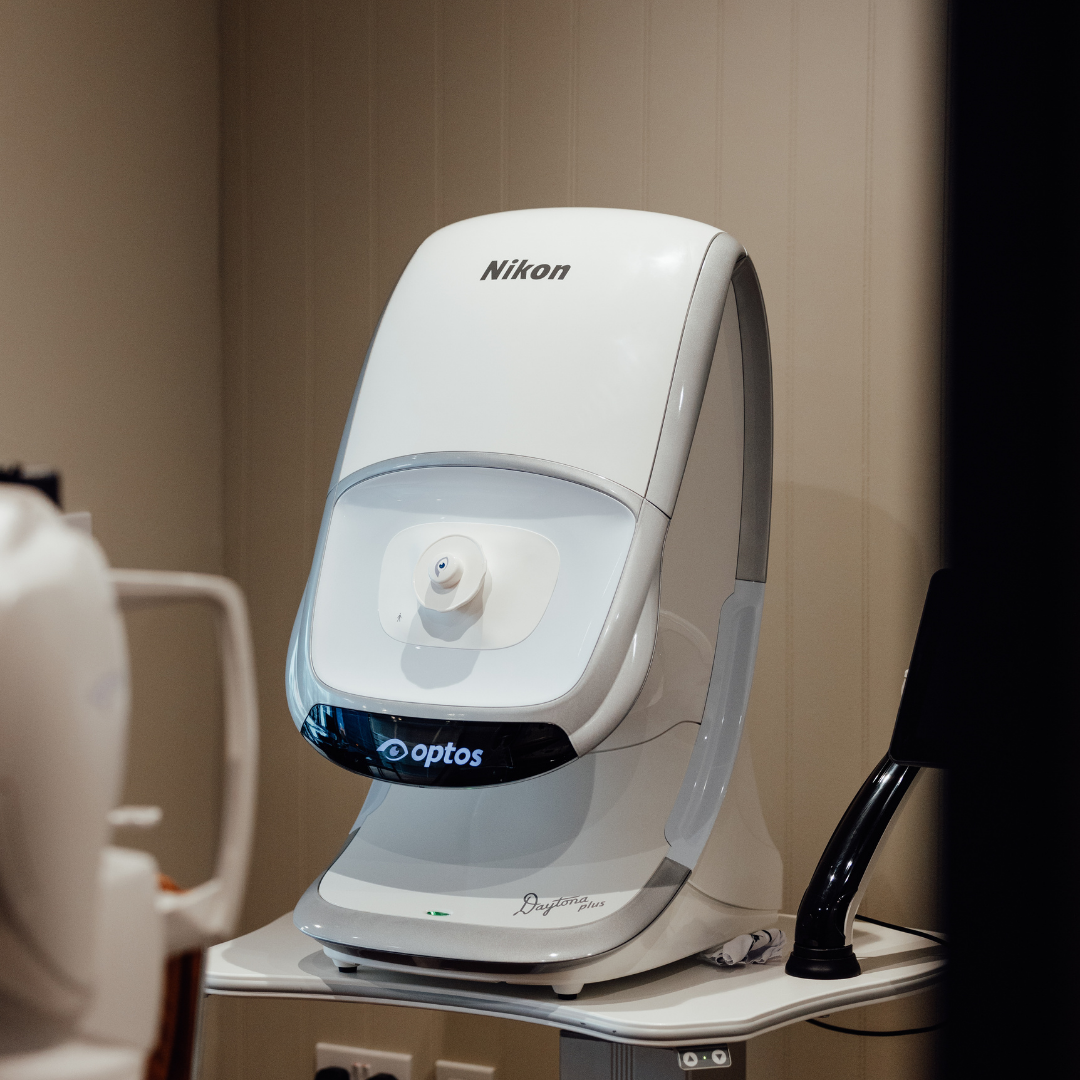At The Eye Place, all our eye examinations include detailed scans of the eye using the Optomap. But what does the Optomap do and why do we use it?
The retina is the only place in the body where your blood vessels can be seen directly. This means conditions that can affect the vision and other diseases such as strokes, heart disease, diabetes and more can be detected by looking at the retina. These conditions can be detected in their earliest stages before you notice any pain or changes to your vision.
The Optomap is a quick and comfortable scan which is taken at the beginning of your eye examination. To have the exam, you look through the device one eye at a time and there will be a flash of light when the image is taken. This takes less than half a second and the images are available to view immediately. With traditional retinal imaging only 15% of the retina can be captured, by using Optomap we can capture 82% of the retina, providing our Optometrists with an ultra-widefield retinal image.
There are two main benefits to having Optomap included in your eye examinations.
- Optomap facilitates early detection and protection from vision impairment and blindness
- Detection of life-threatening diseases such as cancer, stoke and cardiovascular diseases
Early detection of any condition means that treatment can be administered early and quickly, reducing the risk to your sight and health.
We recommend including scans as part of your regular eye examinations as it provides our Optometrists with important data about the health of your eyes and allows us to compare to previous scans to asses for any changes over time. For more information about our technology or our eye examinations, contact your local Eye Place today.

